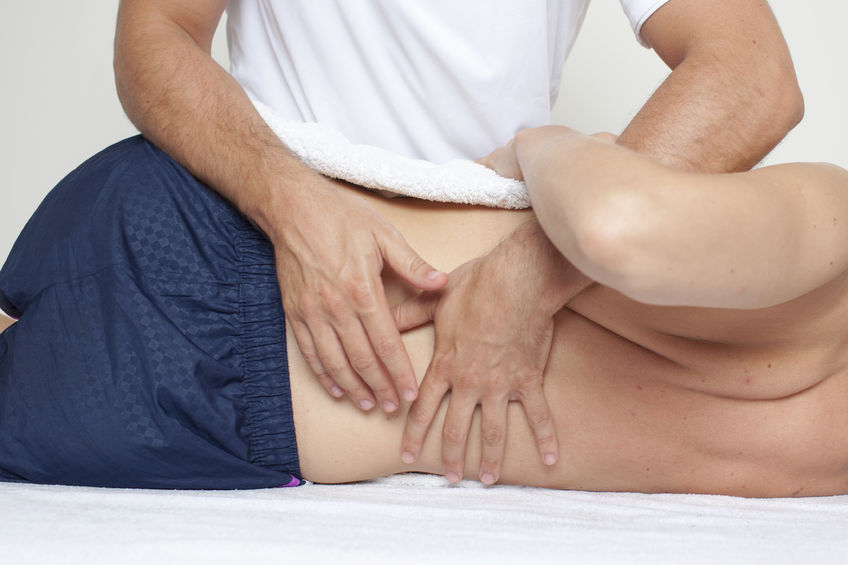Osteo, Physio, Chiro… What’s the difference?
If you’re recovering from an injury, experiencing aches and pains, or having trouble with movement and mobility, it seems there is an almost never ending choice of therapists and practitioners who might be able to help you. The tricky part is knowing who is most likely to… Osteopaths, physiotherapists and chiropractors all work in the area of musculoskeletal health but they all take slightly different approaches to diagnosis and treatment. This can make it difficult to know which one might be right for you.
Regardless of whether you choose to start your recovery journey with an Osteo, a Physio or a Chiro we all have similar requirements to provide an appropriate standard of care. This means you can expect a similar initial consult regardless of who you choose to see.
At a first visit your chosen practitioner should
Take a detailed history, not only of your present injury but also your broader health and lifestyle. They absolutely need this info if they’re going to arrive at a diagnosis and care plan that takes your individual neurological, metabolic and immune attributes into account. Unfortunately this means you’ll probably spend a little more of the consult talking than you’d like but your chances of a fast resolution and a positive outcome are much higher so it’s worth forgoing the extra treatment time.
Conduct a thorough examination, this should generally include both musculoskeletal and neurological examinations and should not only focus on what hurts but how you move, load and use it functionally. These elements are critical to planning out a recovery plan that not only decreases your pain but also allows you to get back to doing the things you love.
Each practitioner will have been trained to AHPRA standards for a primary healthcare professional and this means that we’re all skilled and qualified to perform neurological, cardiovascular and systemic exams to consider and assess for any other illnesses that might masquerade as musculoskeletal pain. So you should feel comfortable that you’re in safe hands no matter who you choose.



Present you with a clear diagnosis and treatment plan, this is particularly important if you’re wanting to take control of your health, avoid recurrence of the injury and avoid unnecessary appointments. A car plan should outline the key steps or tasks in achieving full recovery and address any factors that might lead to the injury becoming a recurrent problem.
If your therapist skips any of these steps in a rush to get you on the table to ‘fix’ the problem…your alarm bells should ring.
Treatment styles and techniques
The hands on style or treatment techniques selected by your practitioner shouldn’t really vary too much according to their qualification. In truth their technique selection should vary according to you and your individual injury, attributes and preferences. There are some generalisations that can be made by qualifications but each individual therapist will have their own background of ongoing professional education that often sees great overlap in therapeutic approaches. Reading the individual practitioner bio on their website will often give you a much better idea of their approach.
Both chiropractors and physiotherapists treat joints and soft tissues to increase movement and strength and relieve pain. But the more common differences between the two are that a chiropractors traditionally uses manipulation of the spine and limbs, whereas a physiotherapists will more commonly use mobilisation techniques and home rehabilitation exercises.
If they’re practicing according to the most up to date evidence, and are likely to help you, they will both include self care strategies, exercise and pain management education and advice.
What is an osteopath and how are they different?
While all three are manual therapists who can suggest exercise and lifestyle modifications as treatment, the main point of difference when it comes to osteopathy is our holistic or ‘big picture’ approach, where the entire body’s structure and function is taken into account.
As a general rule, Osteopaths also use a wide variety of techniques that would typically include both joint mobilisations and manipulations, as well as muscle stretches and massage work. These techniques are used to address the muscles and joints that influence a problem. But, muscles and joints are not the only tissues that contribute to musculoskeletal pain, so Osteopaths will typically also use a range of techniques to address the nerves, the blood and lymphatic vessels, and even the skin. This is just one part of our ‘big picture’ approach to diagnosis and management.
Osteopaths view each person, condition and injury as unique, so osteopathic treatments will always vary from person to person.
Here is a little more about each, so you’ll know what to expect.
Physiotherapists
Physiotherapy is focused on movement and function, often following injury or surgery, or when dealing with a physical disability. A physio uses massage, exercise, stretching and hands-on manipulation to treat pain or dysfunction and to improve your mobility and flexibility. Consult times can vary but a 15-30 minute schedule is about average.
A physio may be able to help you with:
- Muscle and joint stiffness or pain
- Recovery from an injury or operation
- Neurological disorders
- Occupational health and safety issues related to your work
If you have any x-rays or scans relevant to your issue, bring these along to your first visit. A physio probably won’t ask you to change into a gown, but wearing loose-fitting clothing will help.
You’ll typically get ‘homework’ in the form of stretching or light exercises when you see a physio – and you’ll find results are much improved if you actually do them!
Chiropractors
Chiropractic treatment is focused on treating and preventing musculoskeletal problems throughout the body, using manual adjustments primarily of the spine. They commonly help treat or manage conditions like back and neck pain, headaches and arthritis.
Bring along any spinal x-rays or scans you have to your appointment. As a general rule, Chiropractors work with this kind of imaging more so than other practitioners.
You may be asked to change into a gown in a private room. During the adjustment itself your chiro will mostly use their hands, but some use a hand held device called an activator also. While manual treatments may feel slightly uncomfortable at times, you shouldn’t feel any significant pain.
Chiropractors tend to use a shorter, more frequent consult schedule to manage their patients, so treatments are typically brief (15-20 minutes). After your adjustment most chiropractors recommend a 3-5 minute walk to let the work settle into your body. You may feel a little sore the following day but this is usually mild and transient and most people feel better within 24 hours of a treatment.
Osteopaths
Osteopaths focus on the health of the entire body, rather than just the injured or affected part. They look at how your skeleton, joints, muscles, nerves, circulatory system, connective tissues and internal organs function and work together as a whole.
You can see an osteo for issues including
- Back and pelvic pain
- Headaches and migraines
- Sporting injuries
- Nerve pain
- Hip, shoulder and knee pain
As with chiropractors or physiotherapists, osteopaths use their hands to interplay with the systems within the body. Although their manual and massage techniques are often gentler than other types of treatment, they are largely effective in improving musculoskeletal pain and movement restrictions. Like physiotherapists, most Osteopaths will also give you ‘homework’ or prescribe exercises for you to do, to continue improving your pain and movement between sessions.
When you see an Osteopath they’ll also need all of your health information so be sure to bring along any x-rays, scans or test results that might be relevant. An osteopathic assessment and treatment can require you to move about a bit, so wearing loose fitting clothing that you can move freely in is helpful.
As a general rule Osteopaths tend to work to longer consult times with 30-45 minute sessions being about the average. Post-treatment soreness is typical in manual therapies and Osteopathy is no exception, 24 hours of tenderness is common after a session.
Want to know more about osteopathy or how we might approach your injury or issue? Feel free to give us a call on 8703044, we’re always happy to have a chat to help you make sure you can be confident in our care.
